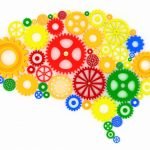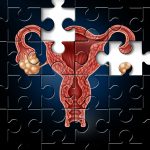Oppositional Defiant Disorder: 6 Key Steps to Restoring Peace
Nicole Cain, ND
Tolle Totum
6 Key Steps to Restoring Peace in Your Life & Your Child’s Life
Patient story: With an engaging smile, 6-year-old Owen leaned forward on the couch and described the Millennium Falcon Lego set that he had received from his parents earlier that week. His voice grew louder with enthusiasm and his mother put a finger to her lips, instructing him to lower his volume. Abruptly, Owen stopped talking, twisted around, and shrieked, “I will not be quiet!” His mother tried to reason with him; however, her reprobation escalated Owen further. He started to scream and arched his back until he flipped off of the couch. I watched as he rolled around on the floor, kicking his legs wildly. His face was scrunched in rage, and a red well-circumscribed ring flushed his cheeks as the skin around his lips grew pale. As his mother tried to get him to calm down, he wedged himself between the wall and the couch, and with a vigorous cry, he used his legs to thrust the couch away from the wall. Embarrassed and apologetic, Owen’s mom explains that this was not even an example of Owen’s worst tantrum. He has had fits of rage at school, home, and in stores. During moments of calm, Owen reports regret, but he just can’t seem to control himself when he gets triggered.
Owen’s mom is not alone in her struggle to help her son. She has carted Owen to the best clinicians and experts in the field of child behavior and psychology in search of an answer. Owen was given a diagnosis of Oppositional Defiant Disorder (ODD), and recommendations included parenting coaching and prescription medications. Owen had tried a series of drugs including but not limited to: dextroamphetamine (central nervous system, or CNS, stimulant), lisdexamfetamine (another CNS stimulant), clonidine (an alpha-adrenergic antagonist), and fluoxetine (an antidepressant). Each medication came with its myriad side effects, ranging from increased rage, sedation, nausea, joint pains, and more.
Owen’s mom presented to my office looking for another answer… and hope. Because naturopathic doctors are trained to get to the root cause of a patient’s symptoms and to help the patient achieve greater overall health and wellness, it’s customary to follow the Therapeutic Order in their approach to the patient.
The Therapeutic Order
My favorite adaptation of the Therapeutic Order is as follows:
- Address acute concerns: The first and most important step is to rule out life-threatening issues and target these first.
- Remove obstacles to cure: You cannot achieve remission of a disease if the cause of the disease is still present. For example: If a child is having outbursts because there is abuse in the home, it is unlikely that the child will get completely well until the family system has been addressed.
- Give the body what it needs: Depletion of your body’s essential building blocks can manifest in a variety of unwanted symptoms and diseases, both mentally and physically. The body needs air, water, nutrition, exercise, and much more in order to function and heal itself. By laying a foundation for health, the body will have a greater ability to transcend beyond recovery, ie, living to its highest potential.
- Tonify weak and damaged systems: Trauma to the system, whether due to stress or other environmental factors, may impede the body’s ability to function correctly. For example, if someone has experienced extreme stress, his or her adrenals may start to function suboptimally, causing symptoms to worsen. Herbs and medicines specifically targeted to rebuild the adrenal glands may be in order.
- Correct structural integrity: This tenant involves looking at the structure of the body as a whole. This not only includes evaluating for subluxation of bones, but also examining muscle fibers, fascia, and other tissues. Correcting the structural integrity of the body not only helps it function better, but also reduces pain, increases blood flow, and impacts the flow of vital energy, or qi.
- Stimulate the vis medicatrix naturae, ie, the body’s ability to heal itself: My favorite tool for this purpose is homeopathy; however, any therapy that increases health can promote the body’s ability to heal itself.
- Address the pathology: This, of course, refers to giving a treatment that matches the symptom. For example: someone with hyperactivity might be given a sedative. Or, in the case of pain, an anodyne like acetaminophen might typically be prescribed.
- Suppress the pathology: This refers to medicines that actually suppress the body’s ability to produce the symptoms to begin with. Steroids are a common medication that is used for this purpose.
Is ODD a Real Disorder?
A common question I am asked: Is Oppositional Defiant Disorder a “real” disorder? There are several ways to answer this question, each of them colored by the philosophical perspective of the person being asked. ODD is a diagnosis that is listed in the Diagnostic and Statistical Manual of Mental Disorders (DSM5), which is authored by the American Psychiatric Association. The DSM5 is useful in that clinical presentations are categorized into commonly observed patterns, and then research is conducted regarding prognosis, prevalence, risk factors, counseling and medication treatment options, and more.
A primary criticism of the DSM5 is that it does not fully take into account traumatic events as an underlying factor in the development of psychiatric concerns. A study published by Kaiser Permanente and the Centers for Disease Control and Prevention (CDC) evaluated Adverse Childhood Experiences (ACE) and risk factors and the prevalence of subsequent physical and psychiatric diseases.1 The study revealed staggering findings, including links between almost all major illnesses and the degree of trauma people incurred while they were children. This study demands that the healthcare system consider treatment of the trauma underlying many physical and psychological diagnoses, as opposed to unilateral pharmacological management.
The Vitalist Perspective
Beyond the aforementioned conversation about addressing trauma and the root cause of disease, there is the “Vitalist Perspective,” which proposes that every being has an innate ability to heal. This is why, if your child falls and scrapes her knee, it will naturally heal itself, even without the child’s attention and concentration on the lesion. The healthier the being, the more quickly and efficiently that cut will heal. All disease works the same way. The body is designed to heal itself, and our external and internal environment impacts that self-healing mechanism.
While considering Owen’s case, a Vitalist may say: Owen’s vital force is out of balance and this imbalance, or dis-ease, is manifesting in anger, rage, disobedience, destructiveness, a red face, and a pale ring around his mouth. Based on this philosophical perspective, the Vitalist will aim to correct this imbalance and restore Owen to health, using the Therapeutic Order as their guide. The specific diagnosis of ODD is less relevant than understanding how the “ODD” is manifesting uniquely in Owen’s case.
In the following paragraphs I will delineate the 6 key steps I take when assessing and treating not only ODD, but all of my patients. Do take note that this is not a completely comprehensive list of concepts. For more information, please refer to the American Academy of Child and Adolescent Psychiatry: https://www.aacap.org.
Medical Evaluation
It is crucial to first do a thorough medical evaluation in order to assess possible causes of a patient’s symptoms:
- Conduct a physical screening examination
- Conduct a psychological evaluation
- Bullying: Is the child a perpetrator or a recipient of bullying? Don’t forget about cyber-bullying.
- What is the home environment like? Is there any discord in the home?
- Are both parents in the house? If not, please describe.
- Is there any evidence of neglect or abuse?
- Are there any indications of a developmental delay?
- What tools do the parents use for behavior correction?
- Is there any violence in the home or in the community (verbal, physical, or otherwise)?
- What type of exposure to trauma or violence has the child been exposed to?
- Is there any depression/anxiety or other mental illness in the child or family?
- Are there any comorbid health concerns in the child?
- Is there any indication of inattention or hyperactivity in the child?
- Is there any substance or alcohol use or abuse by the child or the parents?
- Does anyone in the household smoke cigarettes?
- What was the child’s prenatal environment like?
- Screening tools for practitioners
- NICHQ Vanderbilt Assessment Scale2
- Screening tools for teachers
- SNAP-IV Teacher and Parent Rating Scale (Swanson, Nolan, Pelham)3
Healing the Family System
The family system can serve as an obstacle to cure, or it can be a springboard to wellness. While the child is considered the Identified Patient (IP), the entire family should be a part of the healing process.
- Positive parenting techniques
- Triple P Parenting Program: www.triplep.net
- Consistent discipline: Do not make threats, but rather follow through with discipline. Consistency is key; if a child sees that he can manipulate you, he may use this tool.
- Structured environment: Many children respond very well to structure. A recommendation I often make is to put a calendar on the wall. This calendar includes activities, dates, times, chores, and anything else that is relevant to the child’s day-to-day life. This helps them know what is expected and what is happening next. It also gives them a chance to ask questions or even change their own schedule – which helps build skills they will need in adulthood.
- Focus on the positive, desired behaviors
- Reinforce and praise good behaviors when you observe them
- Give your child an additional 10 authentic compliments per day. An example might be: “I really like how considerate you were when you sat nicely at the table for breakfast this morning.”
- It takes a village
- Get support from your community: Your family, other parents, your child’s teachers, and other members of the community can offer you and your family the support you need.
- Individual and family therapy
- A good therapist is another person to whom your child can bond, who has the skills to get to the root cause of certain behaviors and feelings. A therapist is also valuable in providing your child with coping skills and stress remediation activities.
- Undoubtedly, Owen’s mother was challenged emotionally by her son’s behavior. Giving her the tools for her own self-healing will better prepare her to support her son as he heals, as well as provide her the opportunity for self-recovery.
Nutrition / Diet
If you put Coca-Cola in the gas tank, your car will no longer run. Similarly, what you put in the body of your child will impact his or her wellness.
What to avoid:
- Artificial food dyes and coloring: These ingredients have been linked to aggression, inattention, and other behavioral issues in many studies.
- Food allergens: To evaluate whether or not a child has any food allergies, an elimination diet and food introduction challenge are helpful, as well as various food allergy panels.
- Foods on the Dirty Dozen list: Pesticides such as organophosphates have been associated with neurocognitive developmental and behavioral issues in children. To obtain a complete list of the top foods containing neurotoxins from pesticides, refer to the Environmental Working Group’s page: https://www.ewg.org.
- Caffeine: Coffee, caffeinated tea, and commercial “energy drinks”
- Sugars: This includes artificial sugars such as sucralose, saccharin, aspartame, and others.
Foods to emphasize: Give your body what it needs!
- Dark, leafy greens: If a child does not like vegetables, they can be easily hidden by mixing them into delicious blended smoothies. Fiber from veggies can help stabilize blood sugar, thereby preventing hyperactivity and aggression. To get some tips on easy and delicious kid-friendly recipes, I recommend reading the article “How to Make a Green Smoothie your Kids will Love,” by Alissa Segersten.4
- High-protein meals: Lean meats (eg, organic chicken, turkey, bison), beans, legumes, organic tofu, and more. The website realsimple.com has great ideas for quick and delicious protein-rich meals. Read their article entitled “Easy High Protein Recipes.”5
- Healthy and balanced fats: Growing, active, and healthy children need plenty of balanced fats. Foods like olive oil, coconut oil, avocados, nuts, and nut butters are good for brain health and development. Fish oil is also extremely important for brain health and mood stabilization.
Exercise
- Children should exercise for at least 1 hour per day. This hour should include running, jumping, climbing, and other vigorous forms of play. Not only is this important developmentally, but exercise is also a natural antidepressant and can help with anger, hyperactivity, anxiety, aggression, and more.
- When considering exercise and the physical body, make sure to evaluate gait and coordination, and assess for any signs of spinal or muscular issues.
Supplements: Supplements contain high doses of targeted nutrients that are key to brain and body development.
- Various research has suggested that GMO farming and lack of crop rotation has caused our food sources to contain significantly lower nutrients than their predecessors. As a result, it is essential to provide children with high-quality nutrients.
- Keep in mind that different categories of psychiatric medications deplete the brain of particular nutrients and building blocks required for normal cognitive functioning. Be sure to replace specific nutrients that are needed.
- Various genetic variants that can impact a person’s ability to process nutrients and supplementation may be key to their recovery. A commonly known example is methylenetetrahydrofolate reductase (MTHFR) deficiency. This is caused by a gene mutation that results in impaired processing of folate. Folate is an essential nutrient in the synthesis of S-adenosylmethionine, which plays a major role in mood regulation including the production of serotonin. When this process is compromised, psychiatric, and physical symptoms can develop. Treatment may include providing the patient with methylfolate in an appropriate dosage. Consider running genetic testing to identify such inborn challenges.
Homeopathy: I used homeopathy in Owen’s treatment, and the results of this comprehensive approach to care were astounding.
Using Homeopathy
As a classical homeopathic physician, I spend a considerable amount of time ascertaining the unique, individualizing, and characteristic symptoms in my patients.
In the diagnosis of ODD, it is common for a child to yell, scream, and throw a tantrum when being told what to do. The central feature is, after all, oppositional behavior. As a homeopath, it is my job to look deeper and see how about my patient’s ODD is unique from other children’s ODD symptoms.
During Owen’s comprehensive consultation, I not only followed the aforementioned 5 steps; I also took his homeopathic case. Luckily, during that homeopathic intake, I had the opportunity to observe him during a rage and was able to detect individualizing characteristics in Owen’s episodes that I do not see in all of my patients with ODD:
- He whined and complained throughout the visit
- He became easily triggered; he did not like me looking at him unless it was at a time that he chose to attract my attention and distract from the conversation
- When he became angry, he arched his back and flipped off the couch
- His face became discolored with well-circumscribed red cheeks and, interestingly, also became pale around the lips
- His mother also explained that often during Owen’s tantrums he would scream, “I’m starving! I’m hungry!” Even if he had already eaten a full-size meal, he was ready to eat another. Though he was small, he was capable of eating enough for 2 full-size adults, particularly during and after a rage.
- He had pain in his heel that he described as being stabbed with a needle
As you may have noticed, none of the above symptoms is covered in the DSM5 under the diagnostic criteria of ODD. The symptoms in the notes above are unique to Owen and occur when he is out of balance and symptomatic.
I use a homeopathic repertory program with a single intuitive interface in order to key in characteristic symptoms and locate a list of possible remedies. Upon reading the materia medica, which includes several encyclopedias of symptoms, I felt that the remedy that covered Owen’s most characteristic symptoms, as well as his typical symptoms of ODD, was Cina. The repertorization and notes from the materia medica are shown in Figure 1.

Figure 1. Repertorization
Cina
The child is whining and complaining. [a6] Great earnestness and sensitiveness; he is offended at the slightest joke, [a4]. The child is aggravated by touch and even by being looked at, and is worse from seeing strangers. (KENT)
The child is cross and ugly, kicks and strikes; wants to be carried or rocked or [doesn’t] want to be touched or looked at; wants things and pushes them away when offered. (NASH)
For instance, if you watch or inquire of the nurse, you will find that it alternates between a red hot face, glowing with a bright redness of both cheeks, and a pale, sickly face, with dark rings or circles around the eyes; or, again, red face with great paleness around mouth and nose. (NASH)
Epileptic convulsions (especially at night, with or without consciousness) with cries, bending backwards of the back, and violent movements of the hands and feet (CLARKE)
Great hunger soon after eating (ALLEN T)
Hunger; voracious; after eating (PHATAK)
Great anguish and anxiety on walking in the open air (CLARKE)
Tearing shooting pain in the left heel (while sitting) [Ar] (HAHNEMANN)
Two-week Follow-up (Mom’s Report)
- Outbursts at school: “Owen’s outbursts at school have dropped from 3 times per day, each outburst lasting an hour, to 1 time per week, lasting for 20 minutes.”
- Outbursts at home: “There have been no outbursts at home in the last 2 weeks.”
- Attention: “Owen received 3 awards in the past week for good behavior and attention during school. He has never gotten a good behavior award before.”
- Defiance: “This is still a struggle, but I am working on changing my parenting so that there is no more negotiation, and I am rewarding him when he does comply the first time he is asked.”
- Mood stability: “We have been giving him 10 compliments per day and he seems to be much more calm and affectionate towards his father and me.”
- Heel pain: “Gone”
- Appetite: “Owen still has a ravenous appetite. That has not changed.”
- Sleep: “He is sleeping much better; he doesn’t fight going to bed like he did before.”
Conclusion
With appropriate adjustments to his protocol, Owen continued to exhibit significant improvement. We did play therapy in my office with Owen, and his mom received support for her personal concerns from her own therapist. The family changed their eating habits, and focused on family time that involved exercise and play instead of television and video games. Along with his homeopathic remedy, Owen took fish oil and a children’s multivitamin. After 8 months of treatment, Owen was completely symptom-free.
There is hope for Owen. He no longer has violent outbursts followed by grief and remorse. Instead, he is happy, thriving at school, and his family is emotionally closer than they have ever been. Owen’s mother has the peace of mind that her child is happy and healthier than he ever has been before. Moreover, they were able to accomplish all of this without prescription medications.
Following the principles from the Therapeutic Order, clinicians are able to teach their patients the fundamentals of health. With these tools, it is possible for individuals to feel like themselves again. The body is designed for self-healing, and all it needs sometimes is just a little time, patience, and guidance from a naturopathic doctor.
References:
- Centers for Disease Control and Prevention. About the CDC-Kaiser ACE Study. Last updated June 14, 2016. CDC Web site. https://www.cdc.gov/violenceprevention/acestudy/about.html. Accessed July 6, 2016.
- National Institute for Children’s Health Quality. Resources. NICHQ Web site. http://www.nichq.org/childrens-health/adhd/resources/vanderbilt-assessment-scales. Accessed July 6, 2016.
- Swanson, Nolan and Pelham Questionnaire (SNAP). Available at: https://www.attentionpoint.com/x_upload/media/images/snap_description_with_questions-1.pdf. Accessed July 6, 2016.
- Segersten A. How to Make a Green Smoothie Your Kids Will Love. Whole Life Nutrition Web site. Available at: https://wholelifenutrition.net/articles/childrens-health/how-make-green-smoothie-kids. Accessed July 6, 2016.
- Real Simple. Easy High Protein Recipes. Available at: http://www.realsimple.com/search/site/easy%20high%20protein%20recipes. Accessed July 6, 2016.
 Nicole Cain, ND, is the only physician in the U.S. with both a masters in Clinical Psychology and a naturopathic medical degree. Dr Cain focuses on homeopathic approaches to psychiatric illness, as well as integrative treatments for mental health. She has expertise in bipolar disorder and psychiatric illness in adolescents & young adults. To learn more about Dr Cain, visit: www.drnicolecain.com.
Nicole Cain, ND, is the only physician in the U.S. with both a masters in Clinical Psychology and a naturopathic medical degree. Dr Cain focuses on homeopathic approaches to psychiatric illness, as well as integrative treatments for mental health. She has expertise in bipolar disorder and psychiatric illness in adolescents & young adults. To learn more about Dr Cain, visit: www.drnicolecain.com.










